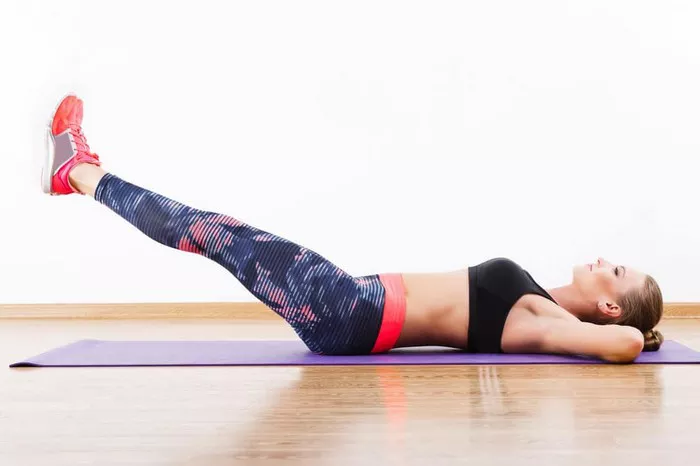Maintaining the cleanliness of your natural rubber yoga mat is essential for hygiene, durability, and overall performance. Unlike synthetic mats, natural rubber mats require gentle care due to their unique composition. Proper cleaning not only prevents the buildup of sweat, dirt, and bacteria but also extends the lifespan of your mat, ensuring you enjoy a safe and comfortable practice every time. This article offers a comprehensive, step-by-step guide to cleaning natural rubber yoga mats, with easy-to-follow tips and methods suited for all levels of yoga practitioners.
Why Clean Your Natural Rubber Yoga Mat Regularly?
Cleaning your yoga mat regularly is crucial for several reasons. First, it removes sweat, oils, and dirt that accumulate during use, creating an unhygienic environment that can lead to unpleasant odors and skin irritation. Additionally, natural rubber is porous, which means it can absorb moisture and bacteria if not properly cleaned. This can degrade the material over time, causing it to lose grip and become less effective for practice. Regular cleaning preserves the mat’s texture and elasticity, ensuring it remains supportive and safe. Moreover, a clean mat provides a more enjoyable yoga experience by preventing slips and maintaining a fresh surface.
What Makes Natural Rubber Yoga Mats Different?
Natural rubber mats differ significantly from synthetic mats in terms of material and care requirements. They are made from latex harvested from rubber trees, which makes them eco-friendly and biodegradable but also more sensitive to harsh chemicals and excessive moisture. Unlike PVC or TPE mats, natural rubber mats cannot withstand strong detergents or machine washing, as these methods may break down the rubber fibers or cause discoloration. Their porous surface requires mild cleaning solutions and gentle drying techniques to maintain their integrity. Understanding these differences helps in selecting the right cleaning approach that balances hygiene and mat preservation.
Essential Supplies for Cleaning Your Natural Rubber Yoga Mat
Before starting the cleaning process, gather all necessary supplies to ensure an effective and efficient routine. You will need:
- A clean, soft cloth or sponge for wiping the surface.
- Mild liquid soap or a gentle detergent free from harsh chemicals.
- Warm water for diluting soap and rinsing.
- A spray bottle for easy application of cleaning solution.
- A towel or microfiber cloth for drying.
- Optional: white vinegar or tea tree oil for natural disinfecting properties.
Using appropriate cleaning supplies is critical, as abrasive materials or strong chemicals can damage the natural rubber, reducing the lifespan of your yoga mat.
Step-by-Step Guide to Cleaning Your Natural Rubber Yoga Mat
1. Prepare a Gentle Cleaning Solution
Start by mixing a small amount of mild soap with warm water. Avoid using too much soap, as excess residue can make the mat slippery. For a natural disinfectant effect, you can add a few drops of tea tree oil or use a solution with diluted white vinegar (one part vinegar to three parts water). Pour the mixture into a spray bottle for easy and even application.
2. Spray and Wipe the Mat
Lay your mat flat on a clean surface. Spray the cleaning solution generously over the entire surface. Use a soft cloth or sponge to gently wipe the mat, focusing on areas with visible dirt or stains. Avoid scrubbing aggressively, which can damage the mat’s surface and texture. Work methodically from one end to the other, ensuring all areas are cleaned.
3. Rinse Off Soap Residue
After wiping, it is important to remove soap residues, which can cause slipperiness. Dampen another clean cloth with plain warm water and wipe the mat thoroughly to rinse away any remaining soap. Do not soak the mat in water, as prolonged exposure to moisture can weaken the rubber and lead to mold growth.
4. Dry Your Mat Properly
Drying is a critical step in maintaining the quality of your natural rubber yoga mat. After cleaning, gently pat the mat with a dry towel to remove excess moisture. Then, hang or lay it flat in a well-ventilated, shaded area away from direct sunlight and heat sources. Direct sunlight can cause the rubber to deteriorate and lose flexibility. Allow your mat to air dry completely before rolling or storing it to prevent mold and unpleasant odors.
How Often Should You Clean Your Natural Rubber Yoga Mat?
The frequency of cleaning depends on how often you use your mat and the intensity of your practice. For daily practitioners or those who sweat heavily during sessions, a light cleaning after every use is advisable to maintain hygiene. This can be as simple as wiping the surface with a damp cloth or using a quick spray of diluted cleaning solution. A more thorough cleaning, involving the full washing and drying process, should be done at least once a month or whenever the mat develops odors or visible dirt buildup. Infrequent use mats should be cleaned before and after periods of storage.
Tips for Maintaining Your Natural Rubber Yoga Mat Between Cleanings
Besides regular cleaning, there are several maintenance habits that help prolong the life and freshness of your yoga mat:
- Always roll your mat with the top side facing out to prevent curling at the edges.
- Store the mat in a cool, dry place away from direct sunlight and heat.
- Use a yoga towel on top of your mat during sweaty sessions to reduce moisture buildup.
- Avoid wearing shoes or sharp objects on the mat to prevent punctures.
- Occasionally air out your mat by unrolling it in a shaded area to prevent moisture accumulation.
What to Avoid When Cleaning Natural Rubber Yoga Mats
Certain cleaning practices can cause permanent damage to your natural rubber yoga mat. Avoid these common mistakes to keep your mat in optimal condition:
- Do not use harsh detergents or bleach: These chemicals can break down the rubber fibers and cause discoloration.
- Avoid machine washing or drying: The agitation and heat can deform and weaken the mat.
- Do not soak the mat: Excessive water exposure leads to moisture retention and mold growth.
- Avoid direct sunlight for drying: UV rays degrade the natural rubber, causing brittleness and fading.
- Avoid abrasive scrubbers: These can scratch or remove the protective surface layer.
Natural Alternatives for Cleaning Solutions
For those preferring eco-friendly or chemical-free options, natural cleaning solutions work well on natural rubber mats:
- Vinegar and water: Mix one part white vinegar with three parts water for a mild disinfectant spray.
- Baking soda paste: For stubborn stains, create a paste of baking soda and water, gently apply it, and wipe off after a few minutes.
- Essential oils: Tea tree or lavender oil have antimicrobial properties and can be added to cleaning solutions for freshness.
- Lemon juice: Acts as a natural deodorizer and mild bleach, useful in diluted form.
These natural alternatives are gentle yet effective, aligning with the eco-conscious nature of natural rubber mats.
How to Handle Stubborn Stains and Odors
Sometimes, regular cleaning isn’t enough to remove tough stains or persistent odors from your yoga mat. For stains, apply a small amount of baking soda paste or diluted lemon juice directly to the spot and let it sit for 10-15 minutes before gently scrubbing and wiping clean. For odors, sprinkle baking soda over the mat, let it absorb overnight, and vacuum or shake off the residue. If the smell persists, a vinegar-water spray followed by thorough air drying can neutralize bacteria causing the odor.
When to Replace Your Natural Rubber Yoga Mat
Even with the best care, natural rubber mats eventually wear out. Signs that it’s time to replace your mat include:
- Cracks or tears in the surface or edges.
- Loss of grip, causing slipping during practice.
- Persistent unpleasant odors despite cleaning.
- Permanent discoloration or hardening of the rubber.
- Excessive thinning or deformation.
Replacing your mat ensures your practice remains safe and comfortable, preventing injury and maintaining hygiene.
Conclusion
Cleaning and caring for your natural rubber yoga mat is vital for maintaining its performance, hygiene, and longevity. By following gentle cleaning methods, using appropriate supplies, and adopting good maintenance habits, you can enjoy a fresh, durable mat that supports your yoga practice. Remember to avoid harsh chemicals, excessive water exposure, and direct sunlight, while considering natural alternatives for a safe, eco-friendly routine. Regular cleaning not only keeps your mat in top shape but also enhances your overall wellness experience, making each yoga session more pleasant and effective.
Related Topics:















